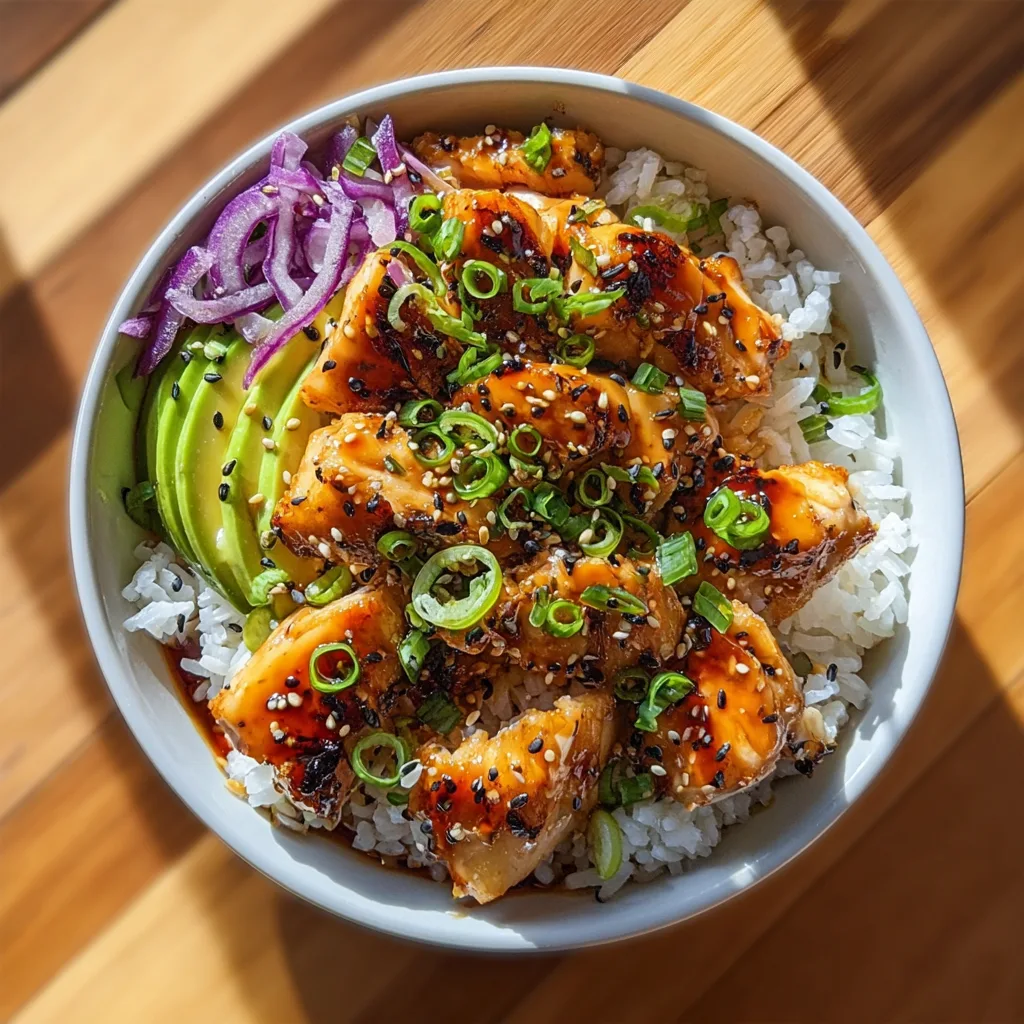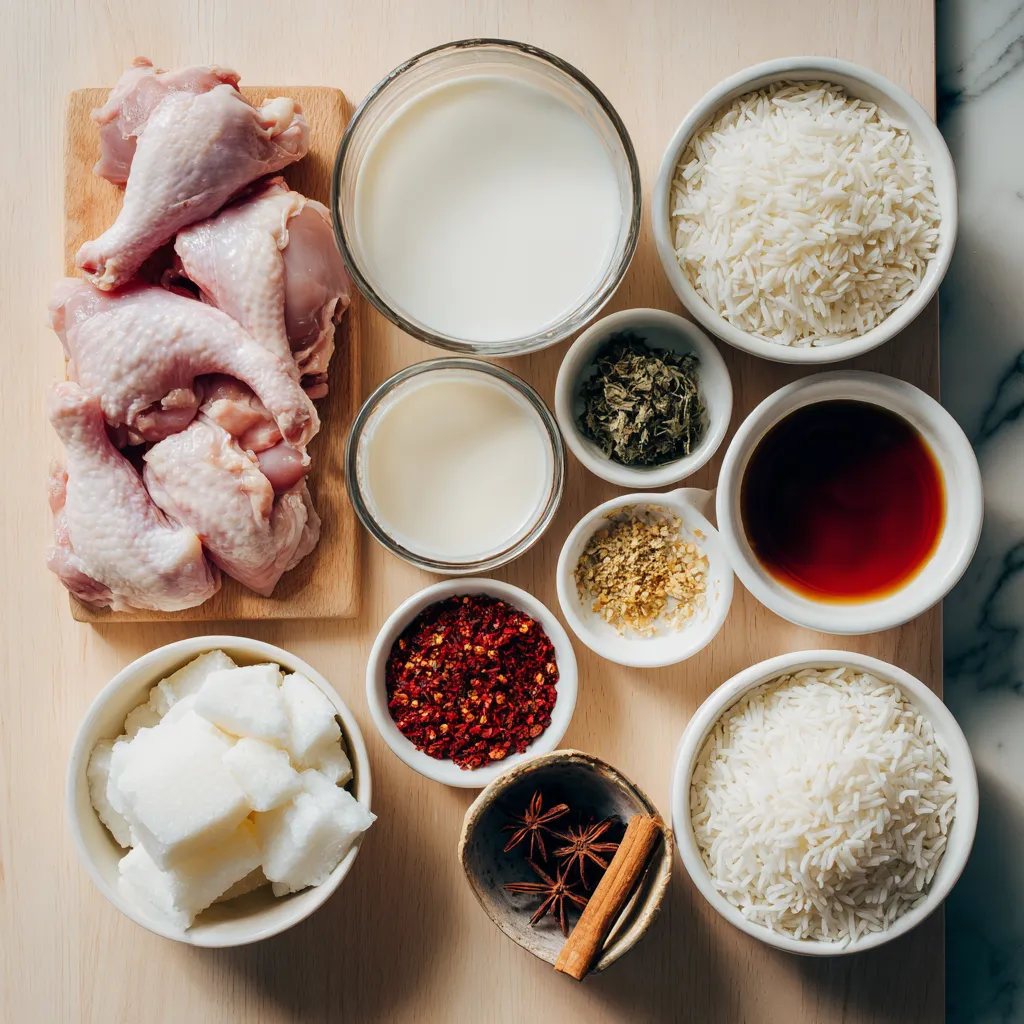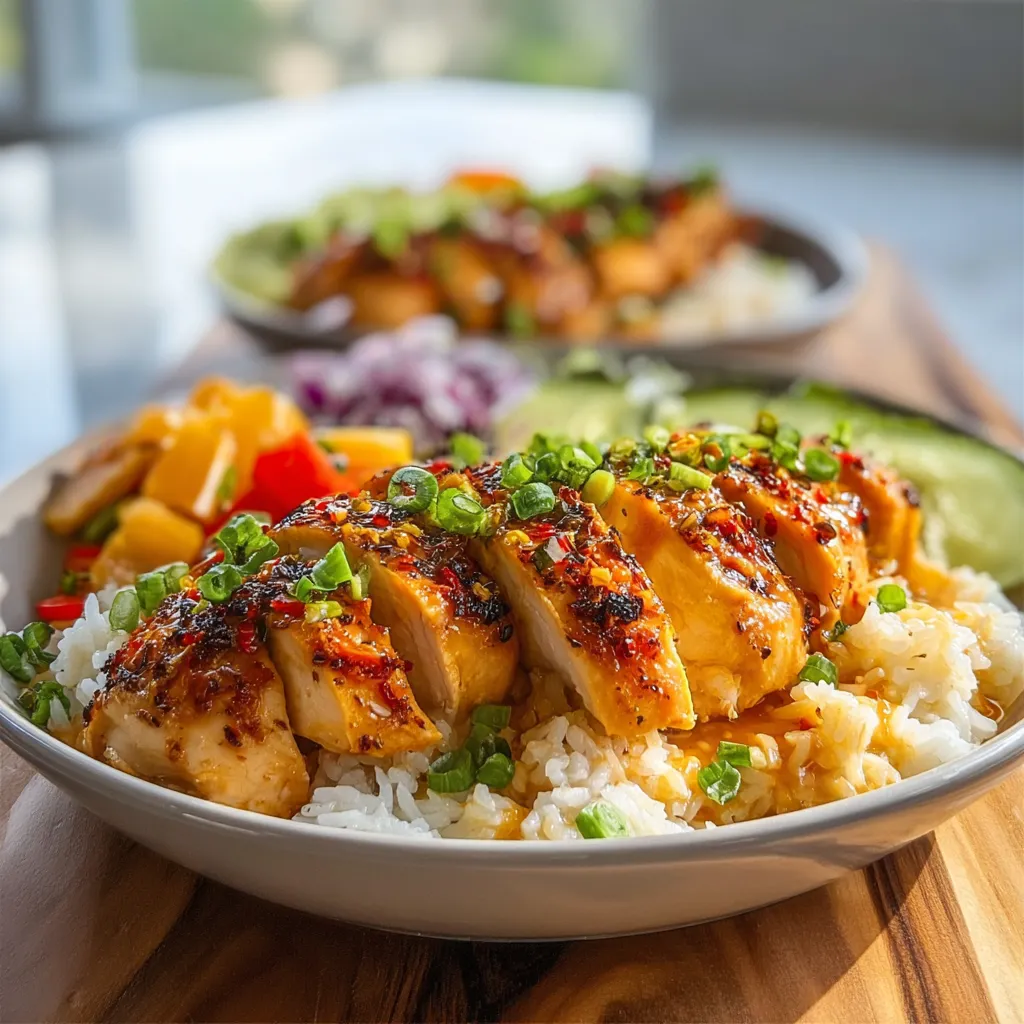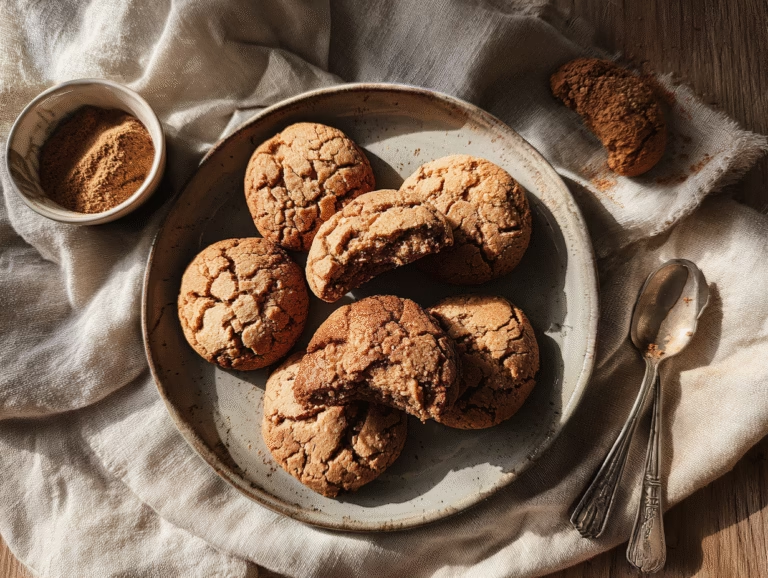Spicy Maple Chicken & Coconut Rice: A Perfect Fusion of Sweet Heat and Tropical Comfort
When culinary worlds collide in the most delicious way possible, dishes like this spicy maple chicken with coconut rice are born. This extraordinary combination brings together the best of North American comfort food traditions with the exotic, aromatic appeal of Southeast Asian cuisine, creating a meal that’s both familiar and excitingly adventurous.
The genius of this pairing lies in how the sweet, smoky notes of maple syrup complement the gentle heat of carefully selected spices, while the rich, creamy coconut rice provides the perfect neutral canvas that allows both the chicken’s bold flavors and its own subtle tropical essence to shine. This isn’t just fusion for fusion’s sake – it’s a thoughtfully crafted combination where each element enhances and elevates the others.

The Art of Maple Glazing Mastery
Maple syrup represents one of nature’s most perfect sweeteners, offering complex flavor notes that extend far beyond simple sweetness. Real maple syrup contains over 300 distinct flavor compounds that contribute to its characteristic depth, including vanilla, caramel, and subtle smoky notes that make it ideal for savory applications.
The key to successful maple glazing lies in understanding how maple syrup behaves under heat. Pure maple syrup caramelizes beautifully when exposed to high temperatures, creating a glossy, mahogany-colored coating that clings to proteins while developing deeper, more concentrated flavors. However, this same tendency to caramelize means timing is crucial – too long in the pan and the glaze can become bitter and overly thick.
The balance between sweet and spicy requires careful calibration. The natural sweetness of maple syrup can easily overwhelm subtle spices, while aggressive heat can mask the delicate complexity of quality maple syrup. The ideal approach involves building layers of flavor through strategic seasoning and controlled heat application that allows each component to contribute its unique characteristics.
Coconut Rice: Tropical Elegance in Every Grain
Coconut rice transforms ordinary grain into something magical through the simple addition of coconut milk, but achieving perfect results requires understanding how coconut milk behaves during cooking and how to balance its richness with complementary flavors. The goal is rice that’s creamy and aromatic without being heavy or overpowering.
The type of coconut milk used significantly impacts the final result. Full-fat coconut milk provides the richness and flavor necessary for truly exceptional coconut rice, while light coconut milk often lacks the depth needed to create the characteristic creamy texture. The thick cream that separates at the top of canned coconut milk contains the most flavor and should be incorporated rather than discarded.
Proper rice preparation begins with selecting the right variety. Jasmine rice works beautifully for coconut rice because its natural floral aroma complements the coconut flavor while maintaining the proper texture that won’t become mushy when cooked in coconut milk. Long-grain rice varieties generally provide better texture than short-grain alternatives for this application.

Nutritional Balance and Wholesome Indulgence
Despite its indulgent flavors, this spicy maple chicken and coconut rice combination provides substantial nutritional benefits through its diverse ingredient profile. The chicken provides complete protein with all essential amino acids, while coconut milk contributes healthy medium-chain triglycerides that may support metabolism and energy production.
The rice component offers complex carbohydrates for sustained energy, while the coconut milk provides minerals including potassium and magnesium. The spice blend contributes antioxidants and anti-inflammatory compounds, particularly from ingredients like ginger and garlic that have been used medicinally for centuries.
The maple syrup, while providing sweetness, also contains minerals including manganese and zinc that are often lacking in refined sweeteners. Using pure maple syrup rather than corn syrup or artificial alternatives ensures these nutritional benefits while providing superior flavor complexity.

Ingredients
For the Spicy Maple Chicken:
- 2 lbs boneless, skinless chicken thighs
- 1/3 cup pure maple syrup
- 2 tablespoons soy sauce
- 1 tablespoon rice vinegar
- 2 teaspoons sriracha sauce
- 1 teaspoon garlic powder
- 1 teaspoon ground ginger
- 1/2 teaspoon cayenne pepper
- 1/2 teaspoon paprika
- 1 teaspoon salt
- 1/2 teaspoon black pepper
- 2 tablespoons vegetable oil
For the Coconut Rice:
- 1 1/2 cups jasmine rice
- 1 can (14 oz) full-fat coconut milk
- 1 1/4 cups water
- 1 teaspoon salt
- 1 tablespoon sugar
- 1 bay leaf
For Garnish:
- 3 green onions, sliced thin
- 2 tablespoons sesame seeds, toasted
- 1 red chili, sliced (optional)
- Fresh cilantro leaves
- Lime wedges

Instructions
- Rinse jasmine rice under cold water until water runs clear. In a medium saucepan, combine rice, coconut milk, water, salt, sugar, and bay leaf.
- Bring coconut rice mixture to a boil over medium-high heat, then reduce heat to low, cover, and simmer for 18-20 minutes until rice is tender.
- While rice cooks, pat chicken thighs dry and season with salt and pepper on both sides.
- In a small bowl, whisk together maple syrup, soy sauce, rice vinegar, sriracha, garlic powder, ginger, cayenne, and paprika to create the glaze.
- Heat vegetable oil in a large skillet over medium-high heat. Add seasoned chicken thighs and cook for 5-6 minutes until golden brown.
- Flip chicken and cook for an additional 4-5 minutes until second side is golden and chicken is nearly cooked through.
- Reduce heat to medium-low and pour the maple glaze over the chicken, turning pieces to coat evenly.
- Continue cooking for 3-4 minutes, turning chicken occasionally, until glaze thickens and caramelizes, and chicken reaches internal temperature of 165°F.
- Remove coconut rice from heat and let stand covered for 10 minutes. Remove bay leaf and fluff with a fork.
- Remove chicken from heat and let rest for 3-4 minutes to allow glaze to set slightly.
- Slice chicken into strips if desired, or serve whole pieces over beds of coconut rice.
- Drizzle any remaining glaze from the pan over the chicken and rice.
- Garnish with sliced green onions, toasted sesame seeds, and fresh cilantro leaves.
- Serve immediately with lime wedges on the side for additional brightness.
- Provide sliced red chilies on the side for guests who want extra heat.
This spicy maple chicken and coconut rice combination proves that fusion cuisine at its best creates harmony rather than confusion, bringing together complementary flavors and techniques to create something entirely new yet deeply satisfying. The sweet heat of the maple glaze plays beautifully against the creamy, tropical backdrop of coconut rice, creating a meal that’s both comforting and exciting, familiar yet exotic enough to feel like a special occasion.

Spicy Maple Chicken & Coconut Rice Recipe
Ingredients
Equipment
Method
- Rinse jasmine rice under cold water until water runs clear. In a medium saucepan, combine rice, coconut milk, water, salt, sugar, and bay leaf.
- Bring coconut rice mixture to a boil over medium-high heat, then reduce heat to low, cover, and simmer for 18-20 minutes until rice is tender.
- While rice cooks, pat chicken thighs dry and season with salt and pepper on both sides.
- In a small bowl, whisk together maple syrup, soy sauce, rice vinegar, sriracha, garlic powder, ginger, cayenne, and paprika to create the glaze.
- Heat vegetable oil in a large skillet over medium-high heat. Add seasoned chicken thighs and cook for 5-6 minutes until golden brown.
- Flip chicken and cook for an additional 4-5 minutes until second side is golden and chicken is nearly cooked through.
- Reduce heat to medium-low and pour the maple glaze over the chicken, turning pieces to coat evenly.
- Continue cooking for 3-4 minutes, turning chicken occasionally, until glaze thickens and caramelizes, and chicken reaches internal temperature of 165°F.
- Remove coconut rice from heat and let stand covered for 10 minutes. Remove bay leaf and fluff with a fork.
- Remove chicken from heat and let rest for 3-4 minutes to allow glaze to set slightly.
- Slice chicken into strips if desired, or serve whole pieces over beds of coconut rice.
- Drizzle any remaining glaze from the pan over the chicken and rice.
- Garnish with sliced green onions, toasted sesame seeds, and fresh cilantro leaves.
- Serve immediately with lime wedges on the side for additional brightness.
- Provide sliced red chilies on the side for guests who want extra heat.
Notes
Spice Integration and Heat Management
Creating the perfect spice blend for maple chicken requires understanding how different heat sources interact with sweetness and how to build complexity without creating one-dimensional burn. The ideal spice profile provides warmth and depth while allowing the maple flavor to remain prominent and the chicken to shine.
Cayenne pepper provides clean, direct heat that doesn’t compete with other flavors, while paprika contributes color and subtle smokiness. Garlic powder and onion powder create savory depth that bridges the gap between sweet and spicy, while ginger adds brightness and complexity that prevents the flavor profile from becoming too heavy.
The timing of spice application affects both flavor development and heat intensity. Spices added early in the cooking process have time to bloom and develop deeper flavors, while those added later maintain more aggressive heat and brighter flavor notes. Strategic timing allows for building complex heat profiles that evolve throughout the eating experience.
Cooking Technique Synchronization
Successfully executing this dish requires coordinating two different cooking processes – the rice preparation and the chicken cooking – so that both components finish simultaneously and can be served at optimal temperature. This coordination requires understanding the timing requirements of each element and planning accordingly.
The coconut rice requires approximately 18-20 minutes of cooking time plus a 10-minute resting period, making it the longer of the two processes. Starting the rice first allows for proper timing coordination while ensuring the rice has adequate time to absorb the coconut milk and develop its characteristic creamy texture.
The chicken preparation can begin during the rice’s cooking time, allowing for efficient use of cooking time while ensuring both components remain hot for serving. The maple glaze application should occur during the final minutes of chicken cooking to prevent burning while ensuring proper caramelization.






